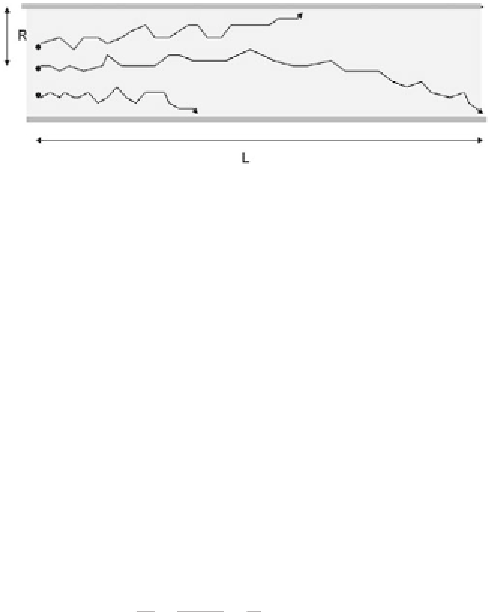Biomedical Engineering Reference
In-Depth Information
Figure 6.19
Sketch of particle trajectories depending on their starting point.
During this time
t
of radial diffusion, the particle has moved along the axial
direction on a distance of
2
V R
(6.68)
L
»
2
V
τ
»
D
2
The coefficient 2 in (6.68) corresponds to the maximum Hagen-Poiseuille veloc-
ity 2
V
at the center of the tube.
With this reasoning, it can be deduced that after a distance
L
, statistically all
the particles will have impacted the wall at least one time. If the wall property is
such that there is a capture upon contact, then (6.68) is a good approximation of
the dimension of the surface of capture. Equation (6.68) may be rewritten in an
nondimensional form
L
V R
=
1
»
Pe
(6.69)
R
D
2
2
where
Pe
is the Péclet number. We see here another significance of the Péclet num-
ber.
Suppose now that the flow rate is imposed by the experimental conditions (a
syringe pump, for example), and using the relation between the average velocity
and the flow rate
2
Q SV
=
=
π
R V
the length
L
becomes
Q
L
»
2
(6.70)
π
D
and the radius of the capillary does not appear in the equation anymore. For a given
mass flow rate, if the radius is increased, the fluid velocity decreases; the convection
distance is then shorter, but the radial diffusion distance is longer. The two effects
balance each other (Figure 6.20).
Spatial Fourier Series
Another approach to the problem of the capture distance in a capillary tube has
been proposed in [8]. First, note that, in a coordinate system moving at the average
velocity of the liquid, the governing equation becomes




